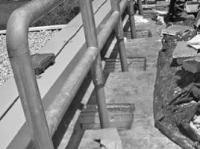Energy Codes: Challenges with Existing Buildings

Why: The model energy codes—the International Conservation Code (IECC) and ASHRAE Standard 90.1—have an increasingly profound effect on the way that new building enclosures perform and on the way they are designed. With each subsequent round of energy code issuance, measureable gains in energy efficiency and cost savings are achieved, and this is typically on top of recent codes that were already reasonably efficient.
What: Buildings built to the prevailing model energy codes as recently as 1999 generally consume 67 percent more energy than those built today—and consumption is even higher for buildings that are even older. These buildings far underperform new ones in terms of energy efficiency, yet they constitute the bulk of the existing building stock. To do this, there needs to be greater emphasis on increasing the energy efficiency of existing buildings.
How: Designers and owners should be aware of the risks of sub-optimization due to a narrow focus on individual components, as opposed to a broad understanding of balanced and com¬plete design. The author maintains that increased discussion today throughout the construction industry about the importance of building enclosures as they relate to energy performance is leading to a broad and growing understanding of how the building enclosure impacts the energy performance of the building. This momentum will help build the inertia needed to cause a shift in the problem of energy consumption of the existing building stock. As consensus starts to build among stakeholders as to what should be done, the vagueness and inconsistencies currently plaguing the codes will give way to improved clarity and comprehensive design. When that starts to happen, addressing challenges that arise with regard to energy code compliance becomes a decision-making process that is much less fuzzy.


Add comment
Log in to post comments